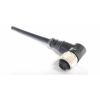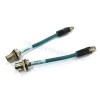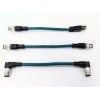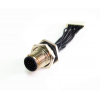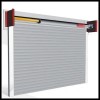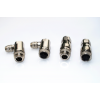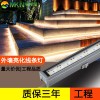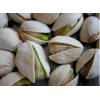1
ENERGY STAR. Program Requirements for Integral LED Lamps
Partner Commitments
Eligible Organizations:
Manufacturers and Distributors of Integral LED Lamps
Commitment
The following are the terms of the ENERGY STAR Partnership Agreement as it
pertains to the
manufacturing and/or distributing of ENERGY STAR qualified integral LED lamps. The
ENERGY STAR
PARTNER1 (PARTNER) must adhere to the following program requirements:
. Comply with current ENERGY STAR Eligibility Criteria, defining the performance
criteria that must
be met for use of the ENERGY STAR certification mark on product packaging and the
testing
criteria for integral LED lamps. The U.S. Environmental Protection Agency (EPA or
The Agency), at
its discretion may conduct tests on products that are referred to as ENERGY STAR
qualified
through the third-party testing portion of the criteria. These products will be
obtained on the open
retail or commercial distribution market;
. Comply with current ENERGY STAR Identity Guidelines. The guidelines describe how
the
ENERGY STAR marks and name must be used. PARTNER is responsible for adhering to
these
guidelines and for ensuring that all its authorized representatives, such as
advertising agencies,
dealers, and distributors, are also in compliance;
. Qualify, or private label at least one ENERGY STAR qualified integral LED lamp
model within one
year of applying to the integral LED lamps portion of the agreement. Partnership
will be granted
upon first product qualification. When PARTNER qualifies the product, it must meet
the criteria in
effect at that time;
. Provide clear and consistent labeling of ENERGY STAR qualified integral LED
lamps. The
ENERGY STAR certification mark must be clearly displayed on the front or primary
display panel of
the product packaging, on the PARTNER’S Internet web site where information
its ENERGY
STAR qualified models is displayed, and in qualified product literature (e.g.,
catalogs, user
manuals, spec sheets, etc.);
. Provide to the ENERGY STAR Integral LED Lamp Program contractor, on a semiannual
basis, an
updated list of its ENERGY STAR qualified integral LED lamp models. PARTNERS must
inform the
ENERGY STAR Integral LED Lamp Program contractor, in these updates if any existing
qualified
integral LED lamp models have been modified or have updated test data or reports,
revised model
numbers and/or retail product numbers, or will be discontinued or phased out and
the timing of
such. PARTNER will provide these ongoing updates in order to remain on the list of
participating
ENERGY STAR integral LED lamp PARTNERS;
. Notify the ENERGY STAR Integral LED Lamp Program contractor within 30 days, if
the designated
supplier of any qualified private labeled integral LED lamps changes to a new
supplier. The
PARTNER is required to submit, in writing or through an online product
qualification tool, updated
Private Labeler Qualification information that identifies the new original
equipment manufacturer,
specific model, and packaging information;
. For each qualifying integral LED lamp model, provide to the ENERGY STAR Integral
LED Lamp
Program contractor accredited laboratory test data reports for the specific model
(s) to certify that
the lamp(s) have met the required safety and performance tests criteria;
1 “Partner” is the company who is portrayed as the manufacturer to the consumer
on the product packaging and on
the ENERGY STAR Qualified Product List. The term is used for both Original
Equipment Manufacturers and
organizations who private label OEM products under different brand names.
2
. For each qualifying integral LED lamp model, provide to the ENERGY STAR Integral
LED Lamp
Program contractor product packaging samples (either electronic or hard copy for
the specific
model(s)) to meet the criteria packaging requirements. Products will only be added
to the ENERGY
STAR Qualified Product List and Searches after review and approval of the product
test results and
product packaging;
. PARTNER is responsible for all associated financial costs if their product(s)
are selected for testing
within the Integral LED Lamp Third-Party Testing and Verification Program. ENERGY
STAR
requires PARTNERS’ participation in the Integral LED Lamp Third-Party Testing and
Verification
Program and will remove PARTNERS from the program if they do not participate in
the program.
. Provide to the ENERGY STAR Integral LED lamp program contractor to EPA, on a
semiannual
basis, unit shipment data for ENERGY STAR qualified integral LED lamps.
Specifically, PARTNER
must submit the total number of ENERGY STAR qualified integral LED lamps shipped
in units by:
o Base type
o Model type/designs:
. Omnidirectional: A, BT, P, PS, S, T
. Decorative: B, BA, C, CA, DC, F, G
. Directional: BR, ER, K, MR, PAR, R
. Non-standard
o Wattage
o Model or product number (if possible)
PARTNER is also encouraged to provide ENERGY STAR qualified unit shipment data
segmented by total unit shipments for each model in its product line and percent
of total unit
shipments that qualify as ENERGY STAR.
The data for each half of the calendar year should be submitted to the ENERGY STAR
Integral
LED Lamp Program contractor, in an electronic spreadsheet format (Microsoft Excel)
that is
provided by ENERGY STAR, no later than February 15th (for July-December) and
August 15th
(for January-June), and may be provided directly from the PARTNER or through a
third party that
works directly with the PARTNER.
. Notify EPA of a change in the designated responsible party or main contacts for
its ENERGY STAR
Integral LED Lamp Program participation within 30 days.
Performance for Special Distinction
In order to receive additional recognition and/or support from ENERGY STAR for its
efforts within the
Partnership, the PARTNER may consider the following voluntary measures and should
keep ENERGY
STAR informed on the progress of these efforts:
. Consider energy efficiency improvements in company facilities and pursue to
benchmark their
buildings through the ENERGY STAR Buildings program;
. Purchase ENERGY STAR qualified products. Revise the company purchasing or
procurement
criteria to include ENERGY STAR. Provide procurement officials’ contact
information to EPA for
periodic updates and coordination. Circulate general ENERGY STAR qualified product
information
to employees for use when purchasing products for their homes;
. Ensure the power management feature is enabled on all ENERGY STAR qualified
monitors in use
in company facilities, particularly upon installation and after service is
performed;
3
. Provide general information
jobs are
relevant to the development, marketing, sales, and service of current ENERGY STAR
qualified
product models;
. Feature the ENERGY STAR promotional or partner mark(s) on PARTNER web site and
in other
marketing materials. If information concerning ENERGY STAR is provided on the
PARTNER web
site, ENERGY STAR may provide
. Provide a simple plan to ENERGY STAR outlining specific measures PARTNER plans
to undertake
beyond the program requirements listed above. By doing so, ENERGY STAR may be able
to
coordinate, communicate, and/or promote PARTNER’s activities, provide an EPA
representative, or
include news
pages, etc. The plan may be as simple as providing a list of planned activities or
planned
milestones that PARTNER would like EPA to be aware of. For example, activities may
include: (1)
increasing the availability of ENERGY STAR qualified products by converting the
entire product line
within two years to meet ENERGY STAR guidelines; (2) demonstrating the economic
and
environmental benefits of energy efficiency through special in-store displays
twice a year; (3)
providing information to users (via the web site and user’s manual)
-saving features
and operating characteristics of ENERGY STAR qualified products; and (4) building
awareness of
the ENERGY STAR Partnership and brand identity by collaborating with ENERGY STAR
on one
print advertorial and one live press event;
. Provide quarterly, written updates to EPA as to the efforts undertaken by
PARTNER to increase
availability of ENERGY STAR qualified products, and to promote awareness of ENERGY
STAR
and its message.
ENERGY STAR. Program Requirements for Integral LED Lamps
Eligibility Criteria -Version 1.1
Amended – March 22, 2010
Below are the product criteria for ENERGY STAR qualified Integral LED Lamps -
Version 1.1. A product
must meet all of the criteria in order to be qualified as ENERGY STAR.
1) SCOPE: These criteria apply to integral LED lamps2, defined as a lamp with
LEDs, an integrated LED
driver, and an ANSI standardized base designed to connect to the branch circuit
via an ANSI
standardized lampholder/socket. These criteria include integral LED lamps of non-
standard form, and
those intended to replace standard general service incandescent lamps, decorative
(candelabra style)
lamps, and reflector lamps. Other types of replacement lamps may be added in the
future as
improvements to LED technology make LED use in other replacement lamp types
viable.
2) DEFINITIONS
A.
A2LA: American Association for Laboratory Accreditation.
B.
ANSI: American National Standards Institute.
C.
ASTM: American Society for Testing of Materials.
D.
CIE: Commission Internationale de l’Eclairage (translated International
Commission on Illumination).
E.
Color rendition: The effect the spectral characteristic of the light emitted by
the LED has on the color
appearance of the objects illuminated by it is called color rendition. The color
rendering index (CRI) is
defined in terms of a comparison of the spectral tri-stimulus values of the
objects under test illumination and
standard illumination according to the recommendations of CIE Publication No.13.3
-1995.
F.
Correlated Color Temperature (CCT): The actual color of the LED is called the
color temperature and is
defined in terms of the spectral tri-stimulus values (color coordinates) according
to the recommendations of
IESNA LM-16-93. For color coordinates near the blackbody loci, the correlated
color temperature, measured
in Kelvin (K), is used.
G.
CSA: Canadian Standards Association.
H.
DOE: U.S. Department of Energy.
I.
Duv: the closest distance from the Planckian locus on the (u', 2/3 v') diagram,
with + sign for above and sign
for below the Planckian locus.
J.
EPA: U.S. Environmental Protection Agency
K.
ETLT: elevated temperature life test.
L.
Integral LED lamp: a lamp with LEDs, an integrated LED driver, and an ANSI
standardized base designed
to connect to the branch circuit via an ANSI standardized lampholder/socket.
M.
IEC: International Electrotechnical Commission.
N.
IESNA: Illuminating Engineering Society of North America.
O.
ISTMT: in situ temperature measurement test.
P.
LED array: An assembly of LED packages on a printed circuit board or substrate,
possibly with optical
elements and additional thermal, mechanical, and electrical interfaces. The device
does not contain a power
source, does not include an ANSI standardized base, and is not connected directly
to the branch circuit.
Q.
LED driver: A power source with integral LED control circuitry designed to meet
the specific requirements of
a LED lamp or a LED array.
R.
LED lumen maintenance (L70): The length of time declared by the manufacturer at
which 70% lumen
maintenance of any large sample of LEDs is reached.
S.
LED module: A component part of an LED light source that includes one or more LEDs
connected to the
load side of LED power source or LED driver. Electrical, electronic, optical, and
mechanical components
may also be part of an LED module. The LED module does not contain a power source
and is not connected
directly to the branch circuit.
T.
LED package: An assembly of one or more LED dies that contains wire bond
connections, possibly with an
optical element and thermal, mechanical, and electrical interfaces. The device
does not include a power
source, does not include an ANSI standardized base, and is not connected directly
to the branch circuit.
U.
Lumen maintenance: The luminous flux at a given time in the life of the LED and
expressed as a
percentage of the initial luminous flux.
V.
MacAdam color ellipse: An elliptical region of chromaticity coordinates that is
defined using a centroid, a tilt
2 ANSI/IESNA RP-16-05, Addendum “a”. IESNA. 2008.
4
angle relative to a horizontal axis, and a defined level of variance. Such a
region defines what chromaticity
coordinates can be acceptably associated with a target Correlated Color
Temperature.
W.
Manufacturer designated Temperature Measurement Point (TMP): The temperature
measurement point
designated by the manufacturer correlating to photometric, life or warranty
values.
X.
MOL: Maximum overall length.
Y.
Minimum operating temperature: The minimum temperature at which the power supply
will reliably
operate.
Z. MRA: Mutual Recognition Arrangement.
AA. NEMA: National Electrical Manufacturers Association.
BB. NRTL: Nationally Recognized Testing Laboratory.
CC. NVLAP: National Voluntary Laboratory Accreditation Program.
DD. OSHA: Occupational Safety and Health Administration.
EE. Power factor: The active power divided by the apparent power (i.e., product of
the rms input voltage and
rms input current of a driver).
FF. TMP: temperature measurement point.
GG. UL: Underwriters Laboratories
3) REFERENCE STANDARDS AND PROCEDURES: ENERGY STAR qualified integral LED lamps
shall
comply with the relevant clauses of the following standards, unless the
requirements of the ENERGY
STAR Integral LED Lamp criteria are more restrictive:
ANSI C78.377-2008 Specifications for the Chromaticity of Solid State Lighting
Products
ANSI C79.1– 2002 American National Standard for Electric Lamps – Nomenclature
for
Glass Bulbs Intended for Use with Electric Lamps
ANSI C78.20 – 2003 American National Standard for Electric Lamps – A, G, PS, and
Similar Shapes with E26 Medium Screw Bases
ANSI C78.21 – 2003 American National Standard for Electric Lamps – PAR and R
Shapes
ANSI C78.24 – 2001 American National Standard for Electric Lamps – Two-inch (51
mm)
Integral-reflector Lamps with Front Covers and GU5.3 or GX 5.3
Bases
ANSI/IEC C81.61-2003 American National Standard for Electric Lamp Bases
ANSI/IEEE C62.41 – 1991 (01May-
1991)
Surge Voltages in Low-Voltage AC Power Circuits, Recommended
Practice for
CIE Publication No. 13.3 – 1995 Method of Measuring and Specifying Color
Rendering of Light
Sources
CIE Publication No. 18.2 – 1983 The Basis of Physical Photometry
IESNA LM-16-1993 Practical Guide to Colorimetry of Light Sources
IESNA LM-28-89 – 1989 Guide for the Selection, Care, and Use of Electrical
Instruments in
the Photometric Laboratory
UL 1993 – 1999 Standard for Self-Ballasted Lamps and Lamp Adapters
UL 8750 – 2009 Light Emitting Diode (LED) Equipment for Use in Lighting Products
Performance Characteristics Test Procedure
Lumen Output and Efficacy IESNA LM-79-08 Electrical and Photometric Measurement of
Solid
State Lighting Products
Lumen Maintenance and Life IESNA LM-79-08 at T=0 hrs and T=6,000 hrs or other
target time;
or
IESNA LM-80-08, Approved Method for Measuring Lumen
Maintenance of LED Light Sources + IESNA LM-79-08 at T=0 hrs,
T=3000 hrs, and T=6,000 hrs or other target time
Color Rendering Index CIE Publication 13.3 – 1995
Transient Protection ANSI/IEEE C62.41 (01-May-1991), Category A, 7 strikes
Electromagnetic Interference FCC 47 CFR including Part 2 (Equipment Authorization)
and Part 18
(Technical Standards
and Emission Limits) for consumer RF Lighting Equipment limits
5
4) REQUIREMENTS FOR ALL LAMPS
Criteria Item ENERGY STAR Requirements Reference
Standard/
Test
Method
Sample
Size/Specific
Requirements
Laboratory
Requirements
Correlated
Color
Temperature
(CCT) and Duv
Lamp must have one of the following
designated CCTs (per ANSI C78.3772008)
consistent with the 7-step
chromaticity quadrangles and Duv
tolerances listed below (see Appendix
A for more information).
LM-79-08
ANSI
C78-3772008
10 units per
model
-5 base-up
-5 base-
down
At least 9 of
the 10
DOE
CALiPER
Recognized or
NVLAP
Accredited for
LM-79-08
Nominal Target Target Duv
CCT CCT (K)
and
tolerance
and tolerance samples must
meet the
specification
2700 K 2725 ± 145 0.000 ± 0.006
3000 K 3045 ± 175 0.000 ± 0.006
3500 K 3465 ± 245 0.000 ± 0.006
4000 K 3985 ± 275 0.001 ± 0.006
Color The change of chromaticity over the LM-79-08 10 units per DOE
Maintenance minimum lumen maintenance test
period (6000 hours) shall be within
0.007 on the CIE 1976 (u’,v’) diagram.
ANSI
C78.3772008
model
-5 base-up
-5 base-
down
9 of 10 lamps
must meet
specification
CALiPER
Recognized or
NVLAP
Accredited for
LM-79-08
Color Minimum CRI (Ra) of 80. In addition, LM-79-08 10 units per DOE
Rendering the R9 value must be greater than 0. ANSI model CALiPER
Index (CRI) C78.3772008
CIE 13.31995
-5 base-up
-5 base-
down
Average of 10
samples must
meet
specification;
none lower
than 77
Recognized or
NVLAP
Accredited for
LM-79-08
Dimming Lamps may be dimmable or non-
dimmable. Product packaging must
n/a n/a n/a
NOTE: DOE is clearly indicate whether the lamp is
working with dimmable or not dimmable.
NEMA to Manufacturers qualifying dimmable
develop a products must maintain a Web page
dimming providing dimmer compatibility
standard for information.
LED lamps and
luminaires. Minimum efficacy, light output, CCT,
CRI, and power factor of dimmable
lamps will be confirmed with the lamp
operated at full power.
Warranty A warranty must be provided for lamps, covering material repair or
replacement for a
minimum of three (3) years from the date of purchase.
6
7
Allowable Lamp
Bases
Must be a lamp base listed by ANSI. ANSI
C81.61-
2007
Self
certification3
Power Factor For lamp power ≤5W and for low
voltage lamps, no minimum power
factor is required
For lamp power >5W, power factor
must be ≥ 0.70
Note: Power factor must be measured
at rated voltage.
ANSI
C82.77-
2002
LM-79-08
10 units per
model
- 5 base-up
- 5 basedown
Average of 10
samples
≥0.70
DOE
CALiPER
Recognized or
NVLAP
Accredited for
LM-79-08
Minimum
Operating
Temperature
Integral lamp shall have a minimum
operating temperature of -20°C or
below.
Self
certification
LED Operating
Frequency
≥ 120 Hz4
Note: This performance characteristic
addresses problems with visible flicker
due to low frequency operation and
applies to steady-state as well as
dimmed operation. Dimming operation
shall meet the requirement at all light
output levels.
1 unit per
model
Self
certification
Electromagnetic
and Radio
Frequency
Interference
Integral LED lamps must meet the
appropriate FCC requirements for
consumer use (FCC 47 CFR Part 15).
1 unit per
model
FCC
laboratory or
manufacturer’s
laboratory5
Audible Noise Integral lamp shall have a Class A
sound rating.
Self
certification
Transient
Protection
Power supply shall comply with IEEE
C.62.41-1991, Class A operation. The
line transient shall consist of seven
strikes of a 100 kHz ring wave, 2.5 kV
level, for both common mode and
differential mode.
IEEE
C.62.41-
1991
5 units per
model
Self
certification
Operating
Voltage
Lamp shall operate at rated nominal
voltage of 120, 240 or 277 VAC, or at
12 or 24 VAC or VDC.
Self
certification
3 Self-certification is a declaration of conformance by the manufacturer to the
requirement. For self-certification where
data are required (sample size is specified in the requirement), the manufacturer
may use data obtained directly from
the manufacturer’s own facilities that are neither NVLAP nor A2LA accredited.
4 This performance criterion is under further review.
5 Laboratory must be listed on FCC Office of Engineering & Technology web site,
and with either NVLAP or A2LA
accreditation.
5) PACKAGING REQUIREMENTS
Warranty Product packaging must state “Warranty” or “Limited Warranty” terms
and provide a toll-free (e.g., "800") number, or mailing address, or Web
site address (if applicable) for consumer complaint resolution. The
written warranty must be included with the lamp packaging at the time of
shipment.
Product Packaging Language
In English, or English with additional languages. For products that will be
sold in Canada, packaging must include both English and French.
Incompatibility with Controls
and Application Exceptions
Lamp package must clearly state any known incompatibility with photo
controls, occupancy sensors, or timing devices. In addition, packaging
should state specific application exceptions, such as totally enclosed
fixtures, insulated air-tight (ICAT) recessed downlights, damp locations,
and any other application restrictions.
Dimmable lamps Lamp package and product information sheet must include a caution
label indicating the lamp may not be compatible with all dimmers and
identifying the Web address (URL) to find up-to-date dimmer
compatibility information.
LED MR-16 Lamps Intended
for use on Low-Voltage
Circuits
Lamp package must state compatibility with low-voltage transformers.
Lamp package and product information sheet must include a caution
label indicating the lamp may not be compatible with all low-voltage
transformers used in existing light fixtures and identifying the Web
address (URL) to find up-to-date low-voltage transformer compatibility
and appropriate use information.
Non-Standard Lamps Lamp package or package inserts must indicate lighting
applications and
fixture types for which the non-standard lamp is intended. Please see
Appendix C for sample icons recommended to communicate appropriate
applications.
Product Equivalency Claims
(for Replacement Lamps)
For replacement lamps (excluding non-standard lamps), product
packaging, supporting documents, and marketing material may only
reference ANSI standard lamp type indicated on ENERGY STAR
product application. Performance comparisons to other types of lamps
or lamp powers are not allowed.
Lighting Facts Label Manufacturers must participate in the Department of Energy’s
Quality
Advocates program and use the Lighting Facts label that is part of that
program: www.lightingfacts.com. Data submitted for ENERGY STAR
qualification will automatically be sent to Quality Advocates to generate
a label. Manufacturers will not need to send duplicate test reports for
each program.
Model Number Packaging must include model number. Model number must be different
from any earlier, non-ENERGY STAR qualified versions of the product.
8
9
6) Non-Standard Lamps – for LED lamps of non-standard lamp type or form
Lamps in this category may not state equivalency to existing standard electric
lamps in terms of wattage
or type on lamp packaging, promotional materials, or cut sheets, either in print
or electronic form. In
addition to the requirements above, the following performance and information
requirements apply to
Non-standard Lamps. These criteria are not applicable to LED lamps intended to
replace linear
fluorescent or high-intensity discharge (HID) lamps.
Criteria Item ENERGY STAR
Requirements
Reference
Standard/Test
Procedure
Sample
Size/Specific
Requirements
Laboratory
Requirements
Minimum
Luminous Efficacy
- LED lamp power
<10W
- LED lamp power
≥10W
50 lm/W
55 lm/W
LM-79-08 10 units per model
- 5 base-up
- 5 base-down
9 of 10 lamps must
meet specification
DOE CALiPER
Recognized or
NVLAP Accredited
for LM-79-08
Minimum Light
Output
200 lumens LM-79-08 10 units per model
- 5 base-up
- 5 base-down
9 of 10 lamps must
meet specification
DOE CALiPER
Recognized or
NVLAP Accredited
for LM-79-08
Luminous Intensity
Distribution
No specific
distribution is
required. Must
submit
goniophotometry
report showing
luminous intensity
distribution
produced by the
lamp.
LM-79-08,
Section 10
1 unit per model DOE CALiPER
Recognized or
NVLAP Accredited
for LM-79-08
Lumen
Maintenance
≥ 70% lumen
maintenance (L70)
at 25,000 hours of
operation
LM-79-08;
Elevated
Temperature
Test per
ENERGY
STAR CFL
version 4.0;
LM-80-08 (for
early initial
qualification
option)
10 units per model
- 5 base-up
- 5 base-down
- LED lamp power
<10W must operate
at 25°C between
measurements.
- LED lamp power
≥10W must operate
at 45°C between
measurements.
-Average of 10
samples must be ≥
91.8% at 6000
hours
DOE CALiPER
Recognized or
NVLAP Accredited
for LM-79-08
Rapid-Cycle
Stress Test
Cycle times: 2
minutes on, 2
minutes off. Lamp
cycled once for
every two hours of
required minimum
L70 life
ANSI C78.5
LM-65-01
(clauses 2,3,5,
6)
10 units per model
- 5 base-up
- 5 base-down
9 of 10 lamps must
meet required
number of cycles
DOE CALiPER
Recognized or
NVLAP Accredited
for LM-79-08 or
NVLAP Accredited
for LM-65-01
10
7) Replacement Lamps – for lamps intended to replace existing standard electric
lamps (per ANSI
C79.1-2002)
All lamps stating equivalency to a standard lamp wattage or type in product
packaging, literature, or other
materials must provide the following information
(i.e., the target lamp):
1) Target lamp type, using standard lamp designations defined in ANSI C79.1-2002.
For example,
A, R, MR, PAR, etc.
2) Target lamp diameter in eighths of an inch. For example, A19, MR16, PAR38, etc.
3) Target lamp nominal wattage.
4) For directional lamp types, target lamp beam angle in degrees.
These criteria are not applicable to LED lamps intended to replace linear
fluorescent or high-intensity
discharge (HID) lamps.
Minimum performance and dimensional criteria are provided below for
omnidirectional, decorative, and
directional lamp replacements.
7A) Omnidirectional Lamps
Applicable lamp types: A, BT, P, PS, S, T (per ANSI C79.1-2002)
Criteria Item ENERGY STAR
Requirements
Reference
Standard/Test
Procedure
Sample
Size/Specific
Requirements
Laboratory
Requirements
Minimum
Luminous Efficacy
- LED lamp power
<10W
- LED lamp power
≥10W
50 lm/W
55 lm/W
LM-79-08 10 units per model
- 5 base-up
- 5 base-down
9 of 10 lamps must
meet specification
DOE CALiPER
Recognized or
NVLAP Accredited
for LM-79-08
Lamp shall have
minimum light
output (initial total
luminous flux) at
least corresponding
to the target
wattage of the lamp
to be replaced, as
shown below.
Target wattages
between the given
levels may be
interpolated.
LM-79-08
Nominal wattage
of lamp to be
replaced (watts)
Minimum
initial light
output of
LED lamp
(lumens)
25 200
35 325
40 450
60 800
75 1,100
100 1,600
125 2,000
Minimum Light
Output
150 2,600
10 units per model
- 5 base-up
- 5 base-down
9 of 10 lamps must
meet specification
DOE CALiPER
Recognized or
NVLAP Accredited
for LM-79-08
11
Luminous Intensity
Distribution
Products shall have
an even distribution
of luminous intensity
(candelas) within
the 0° to 135° zone
(vertically axially
symmetrical).
Luminous intensity
at any angle within
this zone shall not
differ from the mean
luminous intensity
for the entire 0° to
135° zone by more
than 20%.
At least 5% of total
flux (lumens) must
be emitted in the
135°-180° zone.
Distribution shall be
vertically
symmetrical as
measured in three
vertical planes at 0°,
45°, and 90°. See
Appendix B for
illustration.
LM-79-08,
Section 10
1 unit per model DOE CALiPER
Recognized or
NVLAP Accredited
for LM-79-08
Maximum lamp
diameter
Not to exceed target
lamp diameter as
per ANSI C78.20-
2003.
ANSI C78.20-
2003
Self-certification
Maximum overall
length (MOL)
Not to exceed MOL
for target lamp as
per ANSI C78.20-
2003.
ANSI C78.20-
2003
Self-certification
Lumen
Maintenance
≥ 70% lumen
maintenance (L70)
at 25,000 hours of
operation
LM-79-08;
Elevated
Temperature
Test per
ENERGY
STAR CFL
version 4.0;
LM-80-08 (for
early initial
qualification
option)
10 units per model
- 5 base-up
- 5 base-down
- LED lamp power
<10W must operate
at 25°C between
measurements.
- LED lamp power
≥10W must operate
at 45°C between
measurements.
-Average of 10
samples must be ≥
91.8% at 6000
hours
DOE CALiPER
Recognized or
NVLAP Accredited
for LM-79-08
Rapid-Cycle
Stress Test
Cycle times must
be 2 minutes on, 2
minutes off. Lamp
will be cycled once
for every two hours
of required
minimum L70 life.
ANSI C78.5
LM-65-01
(clauses 2,3,5,
6)
10 units per model
- 5 base-up
- 5 base-down
9 of 10 lamps must
required number of
cycles
DOE CALiPER
Recognized or
NVLAP Accredited
for LM-79-08 or
NVLAP Accredited
for LM-65-01
12
7B) Decorative Lamps
Applicable lamp types: B, BA, C, CA, DC, F, G (per ANSI C79.1-2002)
Criteria Item ENERGY STAR
Requirements
Reference
Standard/Test
Procedure
Sample
Size/Specific
Requirements
Laboratory
Requirements
Minimum
Luminous Efficacy
40 lm/W
LM-79-08 10 units per model
- 5 base-up
- 5 base-down
9 of 10 lamps must
meet specification
DOE CALiPER
Recognized or
NVLAP Accredited
for LM-79-08
Lamp shall have
minimum light
output (total
luminous flux) at
least corresponding
to the target
wattage of the lamp
to be replaced, as
shown below.
Target wattages
between the given
levels may be
interpolated.
LM-79-08
Nominal wattage of
lamp to be replaced
(watts)
Minimum light
output of LED
lamp (lumens)
10 70
15 90
25 150
40 300
Minimum Light
Output
60 500
10 units per model
- 5 base-up
- 5 base-down
9 of 10 lamps must
meet specification
DOE CALiPER
Recognized or
NVLAP Accredited
for LM-79-08
Maximum lamp
diameter
Not to exceed target
lamp diameter.
Self certification
Lumen
Maintenance
≥ 70% lumen
maintenance (L70)
at 15,000 hours of
operation
LM-79-08,
LM-80-08 (for
early initial
qualification
option)
10 units per model
- 5 base-up
- 5 base-down
-Must operate at
25°C between
measurements.
-Average of 10
samples must be ≥
86.7% at 6000
hours
DOE CALiPER
Recognized or
NVLAP Accredited
for LM-79-08
Rapid-Cycle
Stress Test
Cycle times must
be 2 minutes on, 2
minutes off. Lamp
will be cycled once
for every two hours
of required
minimum L70 life.
ANSI C78.5
LM-65-01
(clauses 2,3,5,
6)
10 units per model
- 5 base-up
- 5 base-down
9 of 10 lamps must
required number of
cycles
DOE CALiPER
Recognized or
NVLAP Accredited
for LM-79-08 or
NVLAP Accredited
for LM-65-01
13
7C) Directional Lamps
Applicable lamp types BR, ER, K, MR, PAR, R (per ANSI C79.1-2002)
For MR and PAR lamps, the following lamp diameters are included at this time:
MR16, PAR16, PAR20,
PAR30S (short neck), PAR30L (long neck), PAR38
Criteria Item ENERGY STAR
Requirements
Reference
Standard/Test
Procedure
Sample
Size/Specific
Requirements
Laboratory
Requirements
Definition Directional lamp
means a lamp
having at least 80%
light output within a
solid angle of π sr
(corresponding to a
cone with angle of
120°)
EC No
244/2009;
LM-79-08,
Section 10
1 unit per model DOE CALiPER
Recognized or
NVLAP Accredited
for LM-79-08
Minimum luminous
efficacy
- Lamp diameter
≤ 20/8 inch
- Lamp diameter
> 20/8 inch
40 lm/W
45 lm/W
LM-79-08 10 units per model
- 5 base-up
- 5 base-down
9 of 10 lamps must
meet specification
Color Spatial
Uniformity
The variation of
chromaticity within
the beam angle
shall be within 0.006
from the weighted
average point on
the CIE 1976 (u’,v’)
diagram.
LM-79-08
ANSI C78.379-
2006, section
5
1 unit per model
- Angular
chromaticity
measurements shall
be made at the
center and edge of
the beam. The
measurements shall
be made in at least
two vertical planes
90° apart. Results
shall be averaged
from the different
vertical planes.
DOE CALiPER
Recognized or
NVLAP Accredited
for LM-79-08
Maximum lamp
diameter
Not to exceed target
lamp diameter
ANSI C78.21-
2003
Self certification
Maximum overall
length (MOL)
Not to exceed MOL
for target lamp
ANSI C78.21-
2003
Self certification
Minimum light
output
– BR, ER, K, and
R lamps
Lamp shall have
minimum light
output (total
luminous flux) equal
to the target
wattage of the lamp
to be replaced
multiplied by 10.
LM-79-08 10 units per model
- 5 base-up
- 5 base-down
9 of 10 lamps must
meet specification
DOE CALiPER
Recognized or
NVLAP Accredited
for LM-79-08
14
Minimum center
beam intensity6
– PAR and MR16
lamps
LM-79-08,
Section 10
1 unit per model DOE CALiPER
Recognized or
NVLAP Accredited
for LM-79-08
- PAR lamps
http://www.drintl.com/htmlemail/Energystar/Dec09/ESIntLampCenterBeamTool.zip
Enter the following information into the online tool:
PAR diameter in eighths of an inch (i.e., 16, 20, 30, 38)
Target lamp nominal wattage
Target lamp beam angle in degrees (Note: maximum allowable beam angle = 65°.)
- MR16 lamps
http://www.drintl.com/htmlemail/Energystar/Dec09/ESIntLampCenterBeamTool.zip
Enter the following information into the online tool:
Target lamp nominal wattage
Target lamp beam angle in degrees (Note: maximum allowable beam angle = 50°.)
Lumen
Maintenance
≥ 70% lumen
maintenance (L70)
at 25,000 hours of
operation
LM-79-08;
Elevated
Temperature
Test per
ENERGY
STAR CFL
version 4.0;
LM-80-08 (for
early initial
qualification
option)
10 units per model
- 5 base-up
- 5 base-down
- LED lamp power
<10W must operate
at 25°C between
measurements.
- LED lamp power
≥10W must operate
at 45°C between
measurements.
-Average of 10
samples must be ≥
91.8% at 6000
hours
DOE CALiPER
Recognized or
NVLAP Accredited
for LM-79-08
Rapid-Cycle
Stress Test
Cycle times must
be 2 minutes on, 2
minutes off. Lamp
will be cycled once
for every two hours
of required
minimum L70 life.
ANSI C78.5
LM-65-01
(clauses 2,3,5,
6)
10 units per model
- 5 base-up
- 5 base-down
9 of 10 lamps must
required number of
cycles
DOE CALiPER
Recognized or
NVLAP Accredited
for LM-79-08 or
NVLAP Accredited
for LM-65-01
6 Models based on statistical analysis of 432 PAR and 122 MR16 lamps produced by
NEMA manufacturers are
used to set minimum center beam intensity requirements. For a given target lamp
wattage and target beam angle,
mathematical functions for each lamp type yield the minimum required center beam
intensity in candelas (cd). The
minimum requirement is within two standard deviations of the center beam intensity
predicted by the model.
民丰LED 转载 高生 15019488405

 2022年-中铁二十局集团有限公司雄商高铁站前七标项目经理部
2022年-中铁二十局集团有限公司雄商高铁站前七标项目经理部 2022年-陕西延长石油延安能源化工有限责任公司聚烯烃灌装
2022年-陕西延长石油延安能源化工有限责任公司聚烯烃灌装 2022年-麻家梁煤业有限责任公司工作面奥灰水地面区域治理
2022年-麻家梁煤业有限责任公司工作面奥灰水地面区域治理 2022年-亚洲基础设施投资银行贷款河南郑州等地特大暴
2022年-亚洲基础设施投资银行贷款河南郑州等地特大暴
 华润电力红安天明150MW风电项目220kV升压站PC工程
华润电力红安天明150MW风电项目220kV升压站PC工程 华润清远清新林泉扩建50MW风电项目主体施工工程招标公告
华润清远清新林泉扩建50MW风电项目主体施工工程招标公告 华润水泥合浦分布式光伏项目EPC工程总承包招标公告
华润水泥合浦分布式光伏项目EPC工程总承包招标公告 华润电力鲤鱼江电厂贮灰场环境治理及综合利用光伏项目110kV
华润电力鲤鱼江电厂贮灰场环境治理及综合利用光伏项目110kV 山西阳泉矿区泊里煤矿项目井底车场水仓、主排水泵房及主变电所掘
山西阳泉矿区泊里煤矿项目井底车场水仓、主排水泵房及主变电所掘 山西乡宁焦煤集团东沟煤业有限公司工业广场边坡项目治理工程总
山西乡宁焦煤集团东沟煤业有限公司工业广场边坡项目治理工程总 利用亚行贷款中国—东盟中小企业协同创新发展综合提升
利用亚行贷款中国—东盟中小企业协同创新发展综合提升 中铁二十局集团有限公司雄商高铁站前七标项目经理部粉煤灰
中铁二十局集团有限公司雄商高铁站前七标项目经理部粉煤灰 陕西延长石油延安能源化工有限责任公司聚烯烃灌装改造
陕西延长石油延安能源化工有限责任公司聚烯烃灌装改造 麻家梁煤业有限责任公司工作面奥灰水地面区域治理工程招标公告
麻家梁煤业有限责任公司工作面奥灰水地面区域治理工程招标公告 亚洲基础设施投资银行贷款河南郑州等地特大暴雨洪涝灾害灾后恢复
亚洲基础设施投资银行贷款河南郑州等地特大暴雨洪涝灾害灾后恢复 (2022年)鲁山豫能抽水蓄能有限公司河南鲁山抽水蓄能电站安
(2022年)鲁山豫能抽水蓄能有限公司河南鲁山抽水蓄能电站安 (2022年)海南新媒体绿都一期项目(西地块)电梯采购与安装
(2022年)海南新媒体绿都一期项目(西地块)电梯采购与安装 (2022年)同煤大唐塔山煤矿有限公司四盘区立井井筒装备安装
(2022年)同煤大唐塔山煤矿有限公司四盘区立井井筒装备安装 (2022年)亚洲开发银行贷款山西城乡水源保护和环境改善示范
(2022年)亚洲开发银行贷款山西城乡水源保护和环境改善示范 2022年-首钢股份公司迁安钢铁公司炼铁作业部烧结精
2022年-首钢股份公司迁安钢铁公司炼铁作业部烧结精 2022年-江苏省液化天然气储运调峰工程项目取排水工程施工
2022年-江苏省液化天然气储运调峰工程项目取排水工程施工 2022年-山西忻州神达万鑫安平煤业有限公司矿井兼并重组整合
2022年-山西忻州神达万鑫安平煤业有限公司矿井兼并重组整合 2022年-山西忻州神达原宁煤业有限公司90万吨/年矿井兼并
2022年-山西忻州神达原宁煤业有限公司90万吨/年矿井兼并 2022年-成庄矿选煤厂煤泥干燥系统改造工程招标公告
2022年-成庄矿选煤厂煤泥干燥系统改造工程招标公告 2022年-高青县春汇综合智能仓配物流园项目施工总承包
2022年-高青县春汇综合智能仓配物流园项目施工总承包 2022年-陕西中烟工业有限责任公司汉中卷烟厂卷包除尘
2022年-陕西中烟工业有限责任公司汉中卷烟厂卷包除尘 2022年-同煤大唐塔山煤矿有限公司煤泥烘干生产线清洁热源工
2022年-同煤大唐塔山煤矿有限公司煤泥烘干生产线清洁热源工 2022年-承德航天天启风光储氢一体化多能互补示范项目
2022年-承德航天天启风光储氢一体化多能互补示范项目 2022年-利用亚洲开发银行贷款农业综合开发长江绿色生态廊道
2022年-利用亚洲开发银行贷款农业综合开发长江绿色生态廊道 2022年-嵩县前河矿业有限责任公司葚沟矿区天井钻机工程
2022年-嵩县前河矿业有限责任公司葚沟矿区天井钻机工程 2022年-广东陆河抽水蓄能电站施工电源工程建设项目招标公告
2022年-广东陆河抽水蓄能电站施工电源工程建设项目招标公告 首钢股份公司迁安钢铁公司炼铁作业部烧结精3、返8通廊加固设计
首钢股份公司迁安钢铁公司炼铁作业部烧结精3、返8通廊加固设计 江苏省液化天然气储运调峰工程项目取排水工程施工招标公告
江苏省液化天然气储运调峰工程项目取排水工程施工招标公告 山西忻州神达万鑫安平煤业有限公司矿井兼并重组整合项目矿建工程
山西忻州神达万鑫安平煤业有限公司矿井兼并重组整合项目矿建工程 山西忻州神达原宁煤业有限公司90万吨/年矿井兼并重组整合项目
山西忻州神达原宁煤业有限公司90万吨/年矿井兼并重组整合项目 GENOX 木材撕碎机 树枝撕碎机 原木撕碎机 木头撕碎机
GENOX 木材撕碎机 树枝撕碎机 原木撕碎机 木头撕碎机 美国伟迪捷热转印tto打码机6320和分页机示范打码
美国伟迪捷热转印tto打码机6320和分页机示范打码 冷冻修边机原理
冷冻修边机原理 十大品牌金展鸿涂料
十大品牌金展鸿涂料 立柱切割-支座切割视频-桥梁切割拆视频
立柱切割-支座切割视频-桥梁切割拆视频 苏州捷和特殊掀模
苏州捷和特殊掀模 【河南】绳锯切割视频-桥墩切割视频多少钱一米
【河南】绳锯切割视频-桥墩切割视频多少钱一米 仿古电话机的时间设置操作
仿古电话机的时间设置操作 化纤轴承
化纤轴承 衬板类
衬板类 普雷斯特机械设备(北京)有限公司
普雷斯特机械设备(北京)有限公司 爱烤手撕烤兔【图文】
爱烤手撕烤兔【图文】 上海海乐电动门制造有限公司
上海海乐电动门制造有限公司 出租车后窗超薄灯箱
出租车后窗超薄灯箱 安全工具柜
安全工具柜 3c认证
3c认证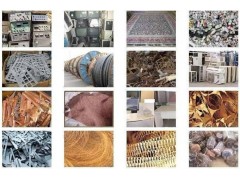 牛湖社区【深圳废品收购回收】联系15989440448廖生
牛湖社区【深圳废品收购回收】联系15989440448廖生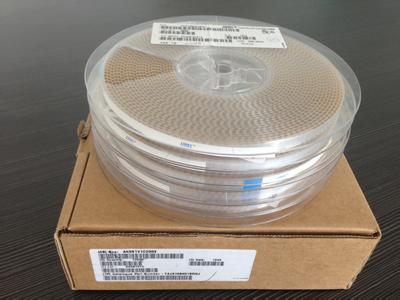 武汉恒永泰回收手机IC手机IC
武汉恒永泰回收手机IC手机IC 最快速回收索尼手机总成
最快速回收索尼手机总成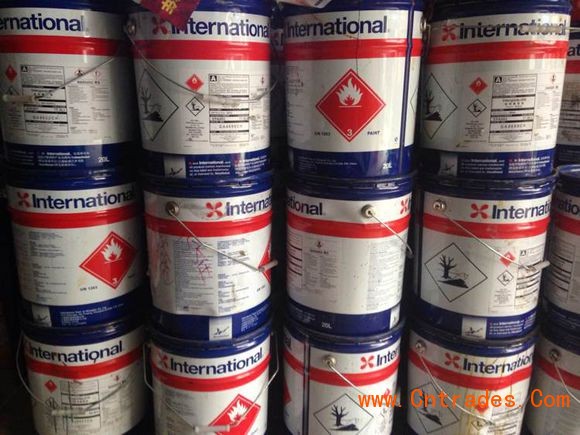 焦作哪里回收染料18625222606
焦作哪里回收染料18625222606 遵化电缆回收”我在“遵化现场收购二手电线电缆
遵化电缆回收”我在“遵化现场收购二手电线电缆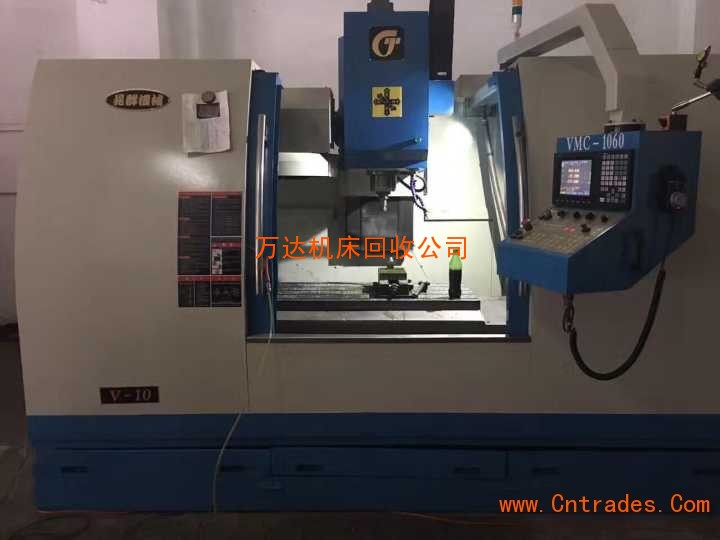 南长区机床回收 旧机床回收 二手机床回收【南长区】回收机床首选
南长区机床回收 旧机床回收 二手机床回收【南长区】回收机床首选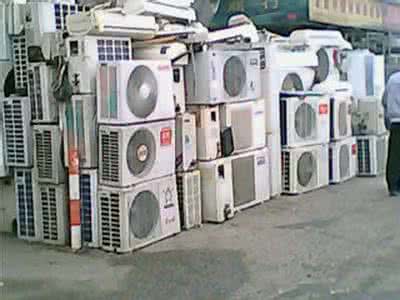 宝安区箱式变压器回收价格
宝安区箱式变压器回收价格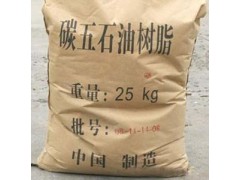 回收酸性金黄染料
回收酸性金黄染料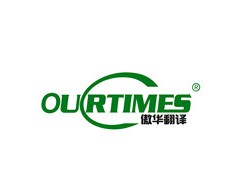 黔南小语种现场翻译
黔南小语种现场翻译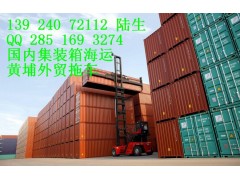 佛山到鸡西海运内贸代理公司
佛山到鸡西海运内贸代理公司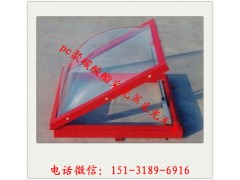 枣庄采光罩 采光棚 采光顶 透明采光天窗 PC采光罩
枣庄采光罩 采光棚 采光顶 透明采光天窗 PC采光罩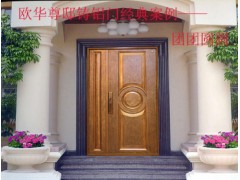 铸铝门价格和走势
铸铝门价格和走势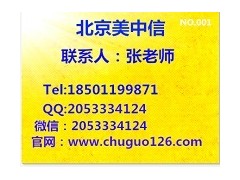 7孩子即将回国时间短F1续签可以提前准备吗?几天办下来
7孩子即将回国时间短F1续签可以提前准备吗?几天办下来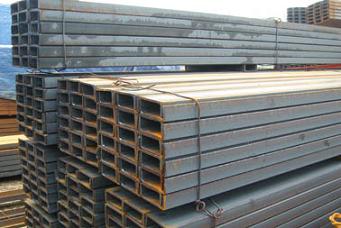 奎屯热镀锌槽钢*国标
奎屯热镀锌槽钢*国标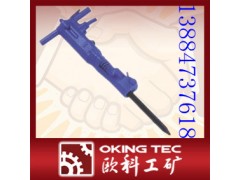 B87C破碎机 B67C破碎机
B87C破碎机 B67C破碎机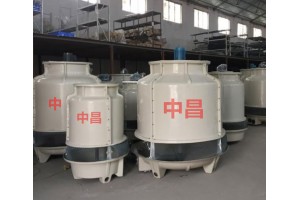 新疆乌鲁木齐玻璃钢冷却塔冷水塔
新疆乌鲁木齐玻璃钢冷却塔冷水塔






